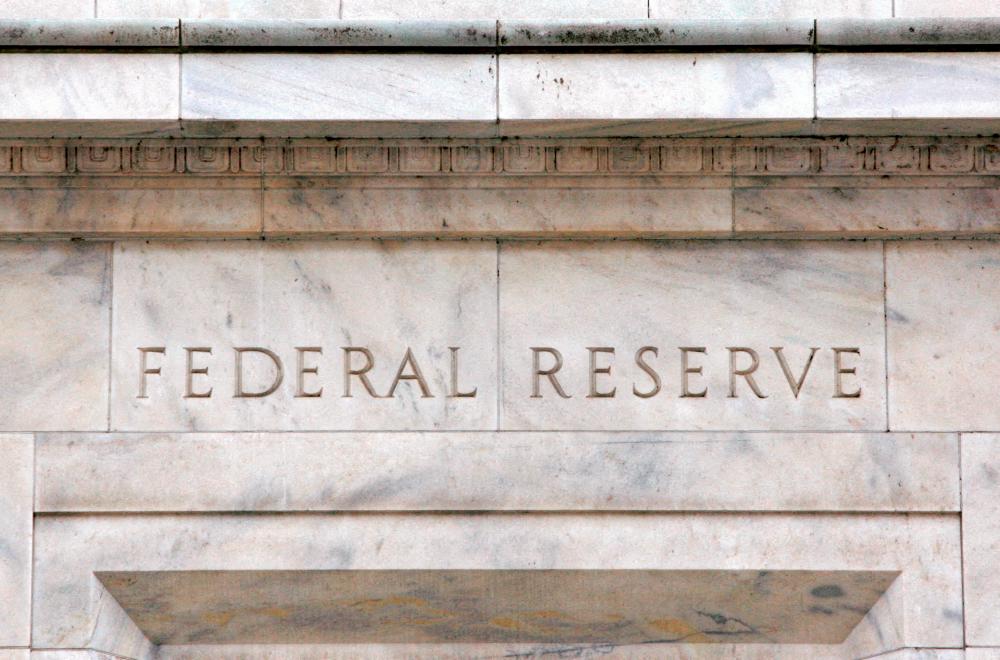NEW YORK: US banks sought record amounts of emergency liquidity from the Federal Reserve (Fed) over recent days in the wake of the failure of Silicon Valley Bank and Signature Bank, which in turn helped undo months of central bank efforts to shrink the size of its balance sheet, Fed data showed on Thursday (March 16).
Banks took an all-time high US$152.9 billion (RM688.2 billion) from the Fed’s traditional lender-of-last resort facility known as the discount window as of Wednesday, while also taking US$11.9 billion in loans from the Fed'’s newly created Bank Term Lending Program. The discount window jump crashed through the prior record of US$112 billion in the fall of 2008, during the most acute phase of the financial crisis.
Including more than US$140 billion in other funding provided to the new bridge banks for Silicon Valley Bank and Signature Bank established by the Federal Deposit Insurance Corp, the central bank’s total balance sheet mushroomed by roughly US$300 billion in the last week. That reverses a substantial portion of the balance sheet reduction accomplished since last summer.
While the borrowing amounts were large, some analysts were nevertheless heartened by what they saw and said there was now less reason to fear events of recent days are rising to a level where they could crash the entire economy.
“The numbers, as we see them right here, are more consistent with the idea that this is just an idiosyncratic issue at a handful of banks,” said Thomas Simons, money market economist with investment bank Jefferies. The government’s support efforts appear likely to work and the size of the numbers reported by the Fed on Thursday suggest “it’s not like a huge system-wide problem,” he said.
The Fed’s bank lending facility was launched on Sunday amid highly unsettled markets, rattled by the failure of regional financial firm Silicon Valley Bank on Friday and then Signature over the weekend.
The facility allows a range of banks and other eligible firms to borrow against Treasuries, mortgage back securities and other eligible collateral at face value, breaking from other Fed lending efforts that put penalties on the lending. Firms can do this for up to a year at a borrowing cost of the one-year overnight index swap rate plus 10 basis points.
The bank lending facility is backstopped by US$25 billion from the Treasury Department's Exchange Stabilization Fund.
Record discount window borrowing was somewhat unexpected as many analysts had thought banks would instead gravitate to the new lending facility. But there was also a question of timing, as firms may have first gone to the discount window as it was there when the troubles broke. Over time, that money could move from the discount window and over to the new facility, some speculated.
That said, some saw the discount window borrowing surge as a positive by itself. The facility has long been shunned by eligible banks for fear that using it would signal to others in the market they were in trouble. The Fed has tried to dispel this stigma, to uncertain effect.
Steven Kelly, senior research associate at the Yale Program on Financial Stability, said that Thursday’s numbers suggest to him that the extraordinary action of standing up a new facility may not have even needed to happen.
Given the numbers released by the Fed, “what this tells me is how easily this could have been done through the discount window”, with the existing Fed toolkit, he said.
The surge in emergency lending caused the Fed’s balance sheet to stop shrinking and grow notably larger. After peaking at just shy of US$9 trillion last summer before the Fed began taking action to reduce its holdings of Treasury and mortgage-backed bonds, overall holdings had fallen to US$8.39 trillion on March 8, before moving up to nearly US$8.7 trillion on Wednesday, which is the highest since November.
The renewed rise of the balance sheet at a time when the Fed is still likely to press forward with rate rises puts two key pillars of monetary policy in some level of conflict.
“That’s a feature, not a bug,” said Derek Tang of forecasting firm LH Meyer. The Fed will be able to stay the course on inflation-fighting rate rises and a bigger balance sheet will allow it to also stay the current course on shedding bonds and avoid stopping altogether the balance sheet run down, he said. – Reuters













